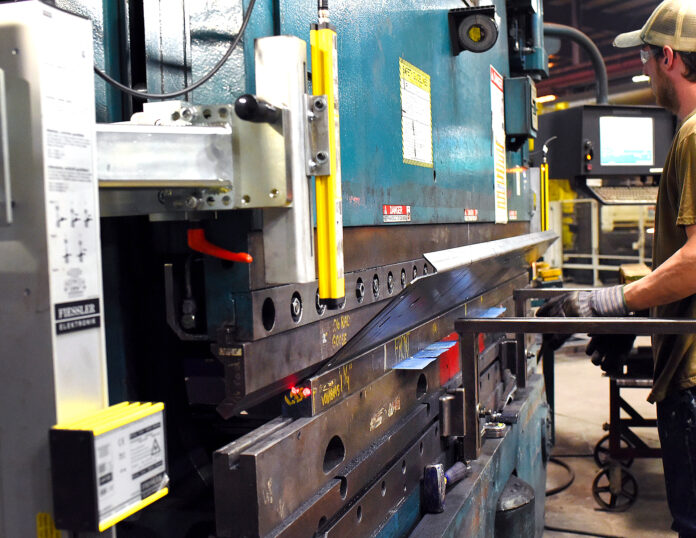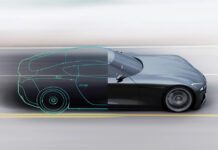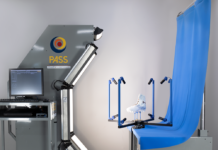When a local supplier of pre-cut and formed steel and aluminum materials accepted a request from a customer to form a few pieces of sheet metal with a reverse flange, no one in the supply chain gave it a second thought. Even the operator who set up the press brake, loaded the forming tools and programmed the simple operation to meet the promised delivery, hadn’t considered the potential danger of what was to come.
Press brakes are one of the most versatile machines on the manufacturing scene today. When properly loaded with punches and dies they can assist operators in bending and forming almost any sheet metal shape. Their downward movements resemble that of a guillotine and as such they can be just as dangerous. But their true hidden nature lies in how the sheet metal folds back into the brake and where an operator might be holding the part during this stage of the operation. Statistically 83% of the reported injuries occur in areas of the press brake that are not protected by existing safety product designs.
Traditionally a machine of this nature has been thought of as being most dangerous when the tooling is closing. Safety systems and protection devices focused on that area of the brake successfully eliminate injuries; however, when the material folds upward into the ram, if fingers or hands are misplaced, they can be pinched by the part edge and likely result in loss of limb or worse. The operator experienced as he was gazing on the punch contacting the sheet into the bottom die, not noticing that his hand was between the sheet edge and the hard-flat surface of the ram face. The pinch occurred so rapidly due to the unwarded swinging of the previously formed edge, yet stopping just in time to leave enough room that it only punctured the skin, drew blood and was felt for several days afterward. The doctors sent him home on very light duty.
As the operator healed, the company considered how it would respond to such an injury. If no action were taken, an injury of this nature could possibly occur again. Soon a plan developed to canvas the next trade show where it might be more likely to find a solution that could be applied to the existing brake. Eventually the search revealed that there was a safety company combining a laser system to guard the tooling area with an adjustable ram face “crush zone” scanning system for poor finger placement during reverse flange forming. Crush Zone was an industry first and the design was being awarded a patent to overcome this exact problem. By combining point of operation guarding and scanning of a crush zone, these technologies combine into a retrofittable product of universal design that could be applied as an upgrade to press brakes from many different manufacturers.
Crush Zone
The operation of the Crush Zone protection prohibits closing movement of the ram when detecting an obstruction within the detectable Crush Zone area.
Once the ram has reached the position in which the primary Safety application has muted, the Crush Zone application allows movement after an obstruction stoppage by releasing and re-pressing the foot pedal a third time.
Any obstruction within the Crush Zone area will prohibit closing movement of the Ram if the press control is not programmed with the proper Mute Positioning in regards to the Primary Safety application.
Any obstruction within the Crush Zone area will be indicated by the solid illuminated Amber lamp located on the front of the Ram, just above the Crush Zone area!
Any forcible movement with an obstruction within the Crush Zone area will be indicated by a flashing Amber lamp located on the front of the Ram, just above the Crush Zone area!





















